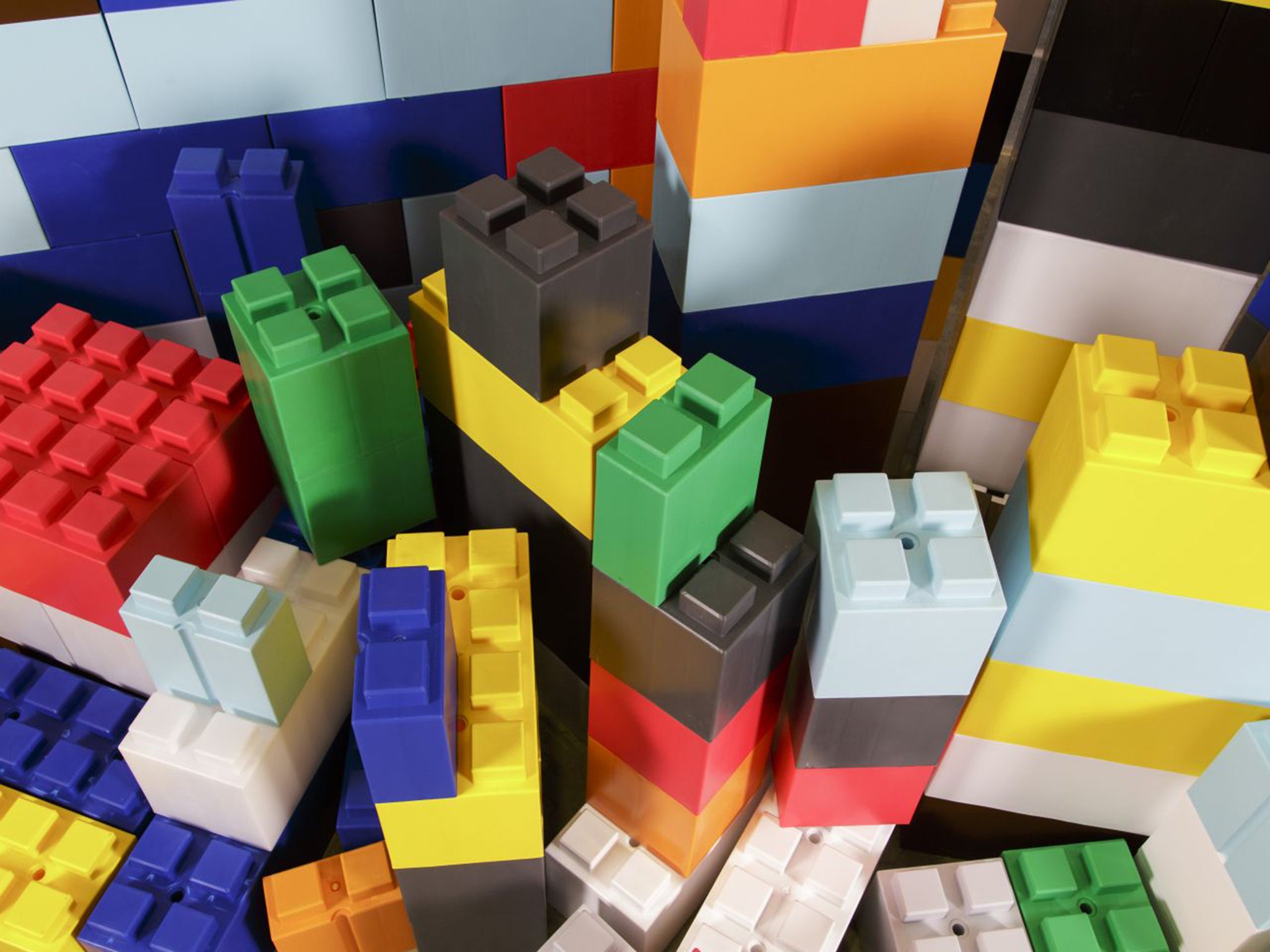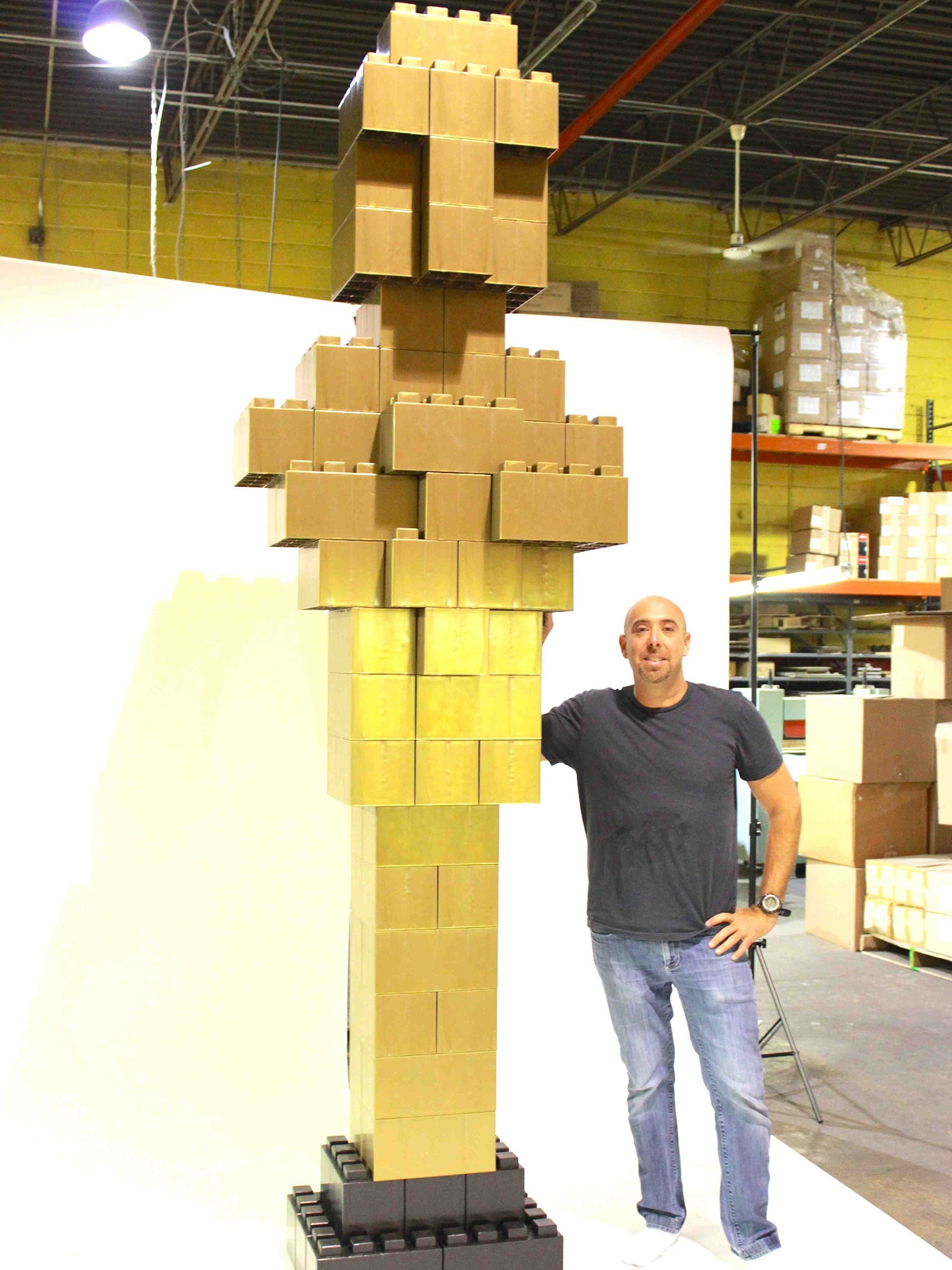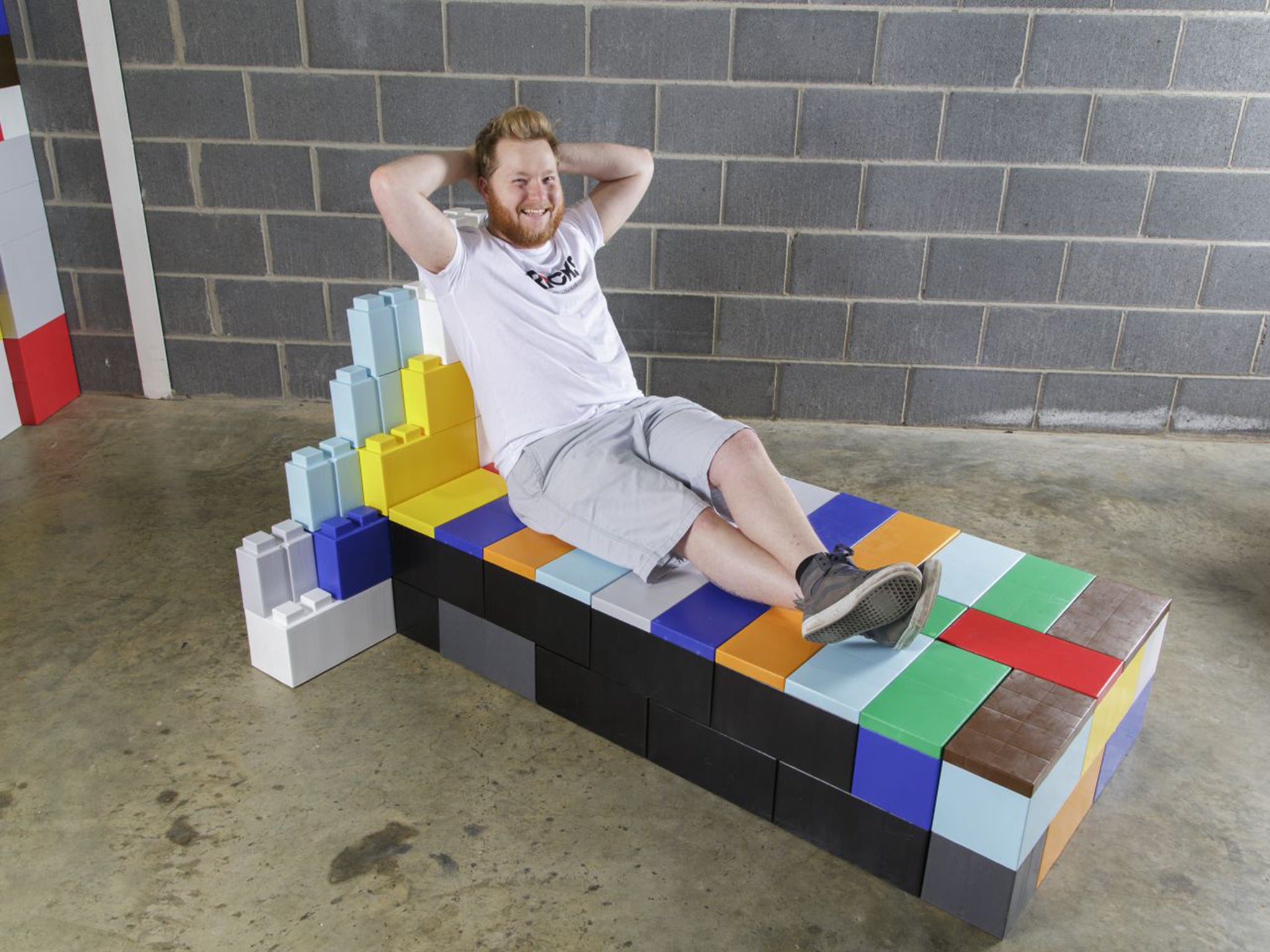EverBlock: Arnon Rosan talks about his Lego-like giant bricks which could become a serious alternative building material
Arnon Rosan’s giant plastic blocks might look like a toy, but they are intended as a serious alternative building material

Don’t mention the L-word. Or rather, do, because Arnon Rosan isn’t afraid to admit the obvious: his giant modular building blocks look like Lego bricks on steroids.
“Yeah, that’s a fair observation,” says the 46-year-old New Yorker whose giant 1kg stackable bricks are designed to snap together to create everything from furniture and office partitions to entire buildings. The reason Rosan isn’t expecting a call from the Danish toy giant’s lawyers is because Lego’s patents on its standard bricks expired more than 20 years ago and since then courts around the world have ruled against Lego’s efforts to use trademark law against rivals.

“The interesting thing is that Lego has become a generic term for a stackable block,” says the inventor of the gargantuan EverBlock. “If push came to shove I wonder if the courts wouldn’t argue that they [Lego] have lost the trademark in the name in the same way [the company] Elevator lost it because it became so ubiquitous?”
Besides, says Rosan, who is about to launch EverBlocks in the UK, “we don’t see ourselves in the same space – we’re trying to build much larger things”. That much is beyond question. Each EverBlock – the standard brick measures 12 inches by six inches by six inches – snaps together with an ease familiar to anyone who dabbled with Lego as a child. Need a new chair, desk or shelving unit? The blocks can handle about 80psi each, so assuming your construction technique has improved since the days when you chewed Lego bricks as well as stacked them, a piece of useable furniture can be snapped together in minutes.
Mr Rosan estimates that two people could build a 30-foot long, eight-foot high wall “in about an hour” – quicker than bricklaying. He says a 3D printing company in Utah recently used about 7,000 EverBlocks to build internal walls for its offices.
“Their attitude was, ‘We’re a young, fun company and we want something that reflects that from an architectural perspective’,” he says. “The employees did the building themselves and it cost the company about $40,000 [£26,000], which isn’t a lot compared to the alternatives”.

Mr Rosan has history with modular stuff that clicks together. Before founding EverBlock he ran the company that made the temporary interlocking walkways that protected Hyde Park – and other vulnerable green spaces – from the wear and tear inflicted by millions of visitors to the London Olympics. “I love a product that can be reconfigured as anything you want to be,” he says.
The EverBlock was a natural progression. The polypropylene blocks allow bespoke items to be made in a size, colour (there are 15 hues) and configuration that can be altered in minutes. As with Lego, there are half- and quarter-size blocks, and smooth cap blocks or sheets of powder-coated metal can be clipped on to the top of the blocks to create surfaces for seats and shelving.
Mr Rosan says he can imagine a day when entire houses will be made of blocks; in the shorter term they could be used to build durable, cost-effective emergency shelters in areas affected by natural disasters. “Tents are fine, but what happens when it’s a three-year relief project and you want something more substantial? That’s where I see an opportunity for these blocks.”
Are there any drawbacks to human scale Lego-style construction? “We like to limit people to 10-foot walls – beyond that they should talk to us,” says Rosan. “And you need to consider if [the structure] is for indoors or outdoors. If it’s outdoors you’ll need to consider the wind loading factor.” Those needing tips on the finer points of safe construction are referred to the wall building simulator (build.everblocksystems.com) on the EverBlock website.
“It’s not a toy, but the joy of it is that you get to build functional things and have fun doing it,” says Rosen. “Our goal is to add a few shapes ever year. One day you’ll be able to build an entire house and fill it with furniture.”
Join our commenting forum
Join thought-provoking conversations, follow other Independent readers and see their replies
Comments